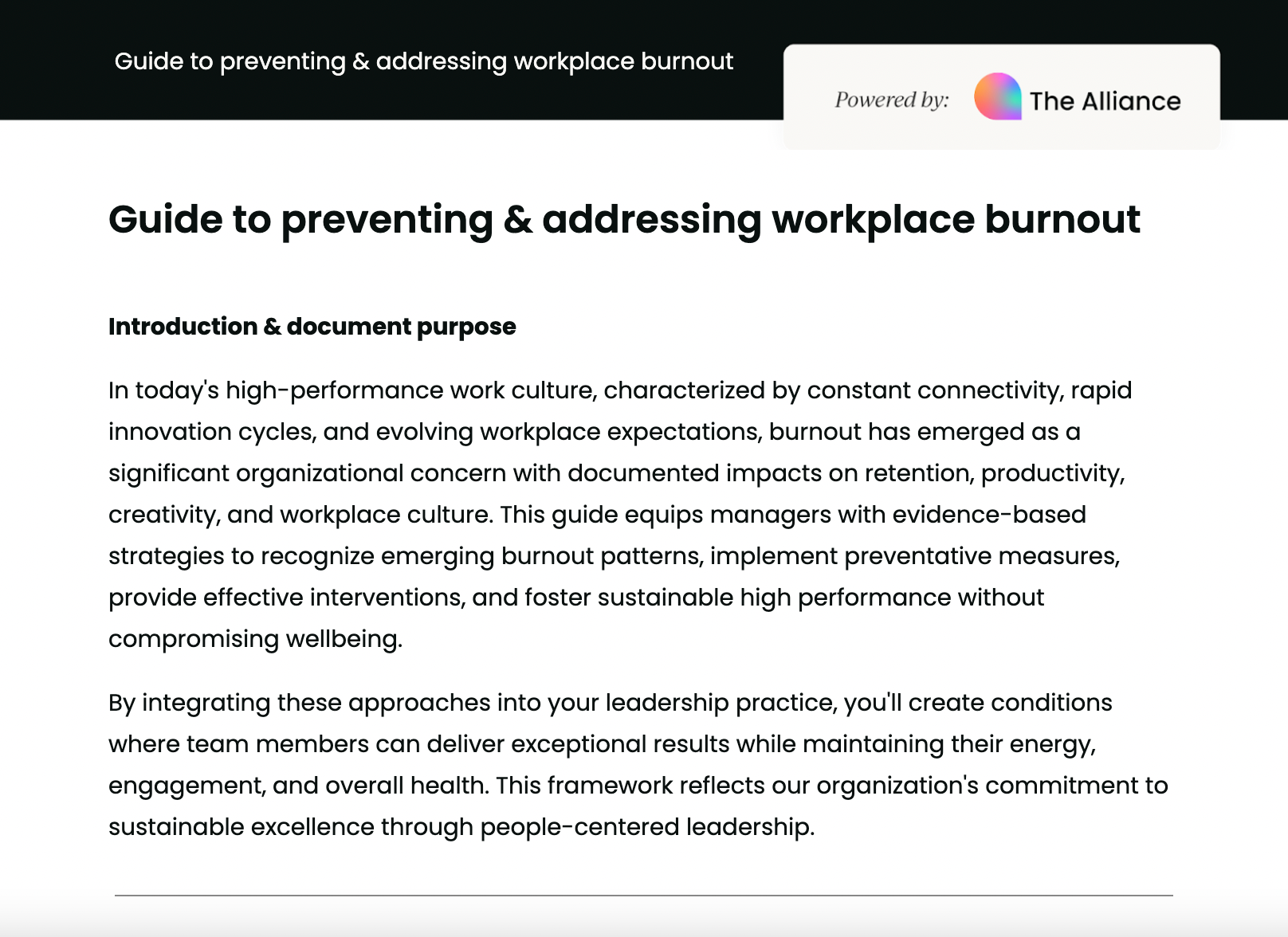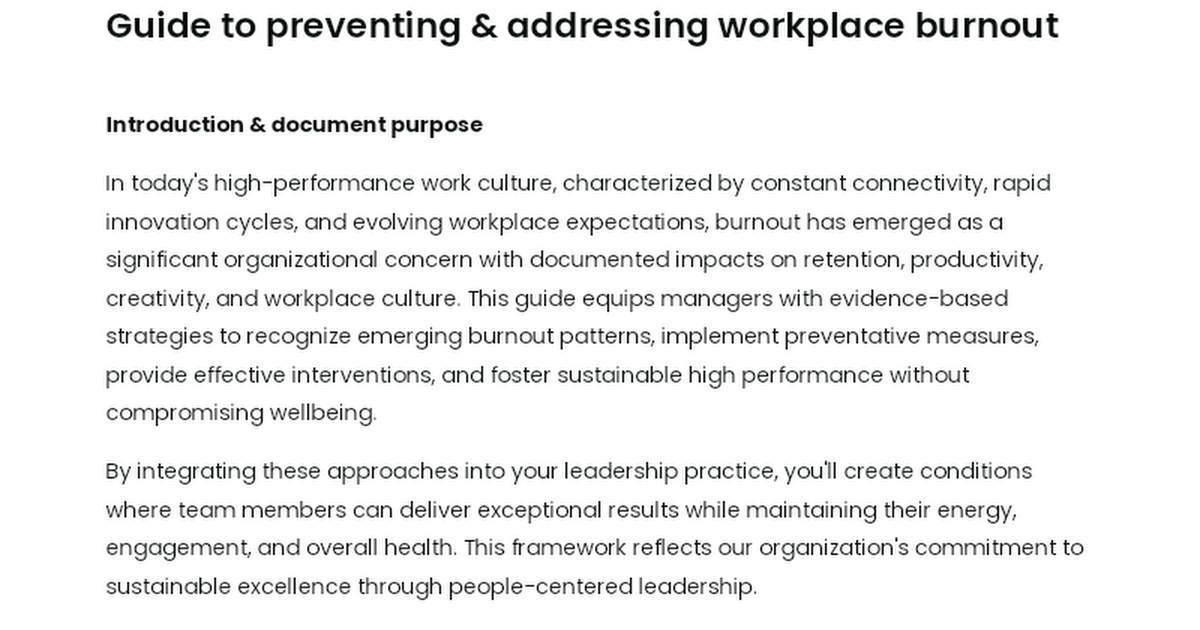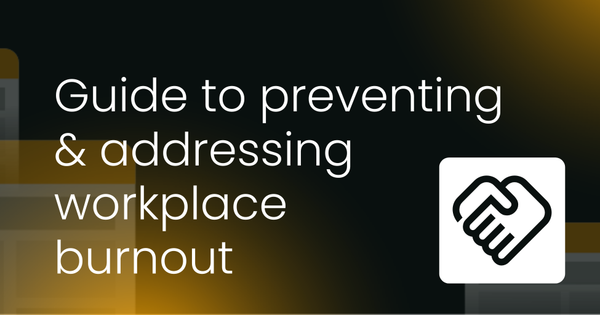You care about your people - and you know that when they’re overwhelmed, checked out, or running on empty, it doesn’t just affect their wellbeing. It affects the work, the team, and the culture you’ve worked so hard to build.
This guide is here to help you change that.
It’s a practical, research-backed resource designed to help you recognize early signs of burnout, take action before it spreads, and build a team culture where people can do great work and stay well.
What is a burnout prevention and response template?
This guide is more than a checklist. It’s a comprehensive framework that helps managers and leaders prevent, recognize, and address burnout across individual, team, and organizational levels. It draws on evidence-based practices to help you understand what burnout really looks like (hint: it’s not just stress), what causes it, and how to intervene effectively.
Inside, you’ll find:
- Clear definitions and dimensions of burnout.
- Early warning signs to watch for.
- Strategies for managing workload and promoting recovery.
- Conversation scripts for check-ins and interventions.
- Tools for building burnout-resistant team cultures.
- Self-care practices for leaders.
It’s structured to help you take immediate action while also thinking long-term about organizational change.
Who is it for?
This guide is designed for people leaders who want to create healthier, more sustainable workplaces, especially HR professionals, chief people officers, and team managers. If you’re responsible for supporting employee wellbeing, maintaining performance, or guiding cultural initiatives, this is for you.
It’s also a great fit for:
- Remote or hybrid team leaders.
- L&D or OD practitioners building manager capability.
- Senior leaders rethinking performance and wellbeing strategies.
- Anyone advocating for structural improvements in how work gets done.
If you care about balancing business outcomes with human sustainability, this belongs in your toolkit.
How to use the template
Start by reviewing the guide in full to get a sense of the holistic framework. From there:
- Spot the signs – Use the behavioral indicators and digital signals to assess burnout risks in your team.
- Open the conversation – Try out the provided scripts to check in with individuals and normalize talking about capacity.
- Act early – Use the prevention tools (like capacity planning or recovery integration tips) to reduce risk before it escalates.
- Support recovery – If someone’s already struggling, follow the intervention strategies to help them reset.
- Lead by example – The self-care section is for you. Sustainable leadership starts with protecting your own energy.
Download your guide to preventing & addressing workplace burnout
If you’re not already a member, simply sign up for our free plan and refresh this page to access your template.





 Follow us on LinkedIn
Follow us on LinkedIn 
